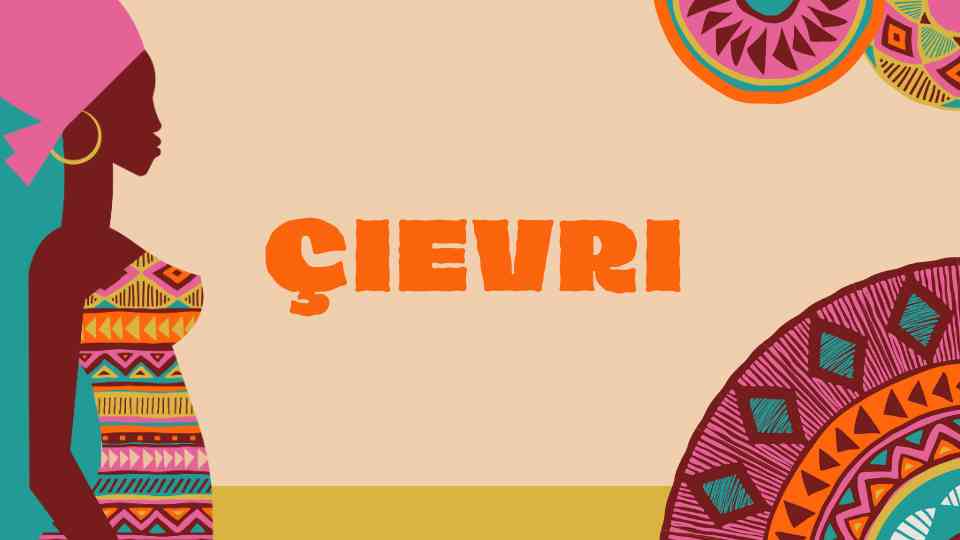Çievri Unveiled: Art, Tradition, and Cultural Heritage
Introduction
Çievri is more than just an art form; it is a vibrant testament to a rich cultural heritage passed down through generations. This intricate craft embodies the deep-rooted traditions and identity of its creators. As modernization threatens to overshadow such traditions, preserving them becomes increasingly crucial. This article explores Çievri, examining its origins, artistic techniques, cultural relevance, and efforts to keep this beautiful tradition alive.
Understanding Çievri
Definition and Origins
Çievri is a traditional craft that creates intricately designed fabrics, garments, or decorative items. While its exact origins are unclear, it is believed to have emerged from various cultures interacting along ancient trade routes.
Historical Significance
Historically, Çievri has served as more than a decorative pursuit; it has been a medium for storytelling and cultural expression. The motifs and symbols used in Çievri designs often narrate tales of the land, people, and their beliefs, acting as a visual language across generations.
The Art of Çievri
Techniques
Creating Çievri requires skill and patience. The process involves weaving, embroidery, and dyeing techniques passed down through apprenticeships. Each piece reflects the artisan’s touch while adhering to traditional methods.
Materials and Tools
Çievri utilizes silk or cotton threads, natural plant dyes, and occasionally metallic threads. The tools are simple—needles, looms, and dyeing pots—but the results are striking.
Symbolism
Each motif in Çievri carries meaning. Geometric patterns might signify community unity, while floral designs could represent fertility. Colors also have significance, with red symbolizing vitality and blue representing protection.
Çievri in Tradition
Role in Ceremonies
Çievri plays a central role in traditional ceremonies and rituals. It is used as gifts, decorations, or ceremonial attire, valued for its beauty and cultural significance.
Symbol of Identity
Çievri represents identity for many communities. Designs can indicate a person’s origins, social status, or role within the community, expressing pride in one’s heritage.
Stories and Myths
Various stories and myths add a mystical dimension to Çievri. Some believe specific patterns or colors bring good fortune or ward off evil spirits, contributing to the art’s cultural and spiritual significance.
Cultural Heritage and Çievri
Reflection of Heritage
Çievri reflects cultural heritage through its storytelling and craftsmanship. It preserves these stories for future generations, ensuring they are not lost over time.
Modern Relevance
Despite modernization, Çievri remains relevant. It is increasingly featured in contemporary fashion and art exhibitions, serving as a link to cultural roots.
Preservation Efforts
Organizations and local governments are documenting Çievri patterns and techniques. Workshops and educational programs aim to teach younger generations about this ancient craft.
Regional Variations
Comparing Styles
Çievri varies significantly across regions. Local customs, climate, and materials influence the style, with some areas emphasizing bold colors and large motifs while others focus on delicate patterns.
Geographic Influence
Geography and climate affect Çievri styles. Regions with abundant natural dyes feature diverse colors, while harsher climates may produce more straightforward designs.
Challenges Facing Çievri
Impact of Modernization
Modernization threatens traditional Çievri practices. The demand for handmade items is decreasing, and younger generations might not appreciate the value of these labor-intensive methods.
Decline in Practices
The decline in Çievri practices is evident, with fewer artisans and a struggle to sustain the craft. This decline affects not just the art but also cultural heritage and identity.
Cultural Erosion
Cultural erosion is a concern as globalization homogenizes unique traditions. Preserving Çievri is crucial for maintaining cultural diversity.
Revival of Çievri
Initiatives
Various initiatives aim to revive Çievri, including cultural festivals, government support, and community projects. These efforts help ensure the tradition’s survival.
Role of Artisans and Organizations
Local artisans and cultural organizations are essential in reviving Çievri. They preserve knowledge and pass it on to future generations, supporting the craft’s sustainability.
Importance of Education
Education is vital for Çievri preservation. Schools, cultural centers, and online platforms are crucial in teaching the value and techniques of this art form.
Çievri in the Global Context
Global Recognition
Çievri is gaining international recognition through exhibitions and cultural exchanges. Its unique beauty is celebrated worldwide.
Cultural Export
As a cultural export, Çievri represents its heritage on the global stage. It is increasingly featured in fashion, interior design, and art, helping keep the tradition alive.
Fusion with Contemporary Art
Contemporary artists blend Çievri techniques with modern aesthetics, creating a dialogue between past and present and ensuring its continued relevance.
Conclusion
The future of Çievri depends on our efforts to preserve it. This art form is not just a craft but a symbol of identity, history, and community. Supporting Çievri preservation ensures this beautiful tradition thrives in the modern world.
FAQs
What is the origin of Çievri?
Çievri originated in culturally rich regions, evolving through influences along ancient trade routes.
How is Çievri different from other traditional arts?
Çievri is distinguished by its intricate designs, symbolic meanings, and traditional techniques passed through generations.
Why is Çievri important today?
Çievri represents cultural identity and heritage. Its preservation is essential for maintaining cultural diversity.
How can I learn to create Çievri?
You can learn Çievri through workshops, online courses, and studying under experienced artisans.
What are critical elements in Çievri designs?
Key elements include symbolic motifs, traditional color schemes, and intricate patterns reflecting the region’s history and culture.














Post Comment